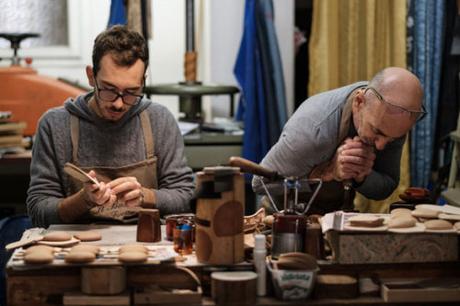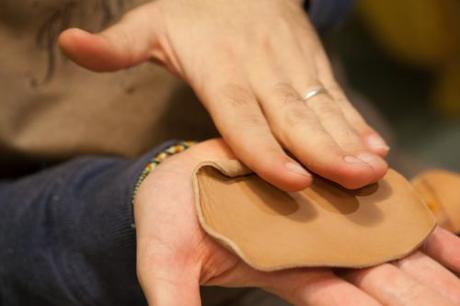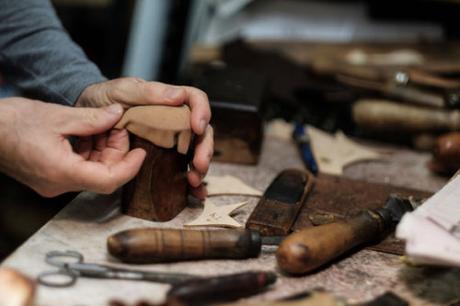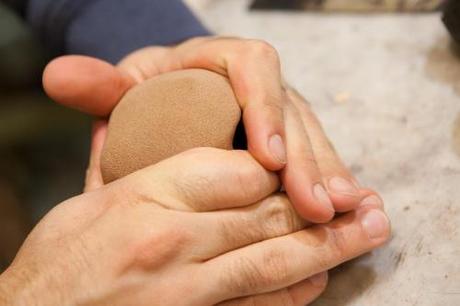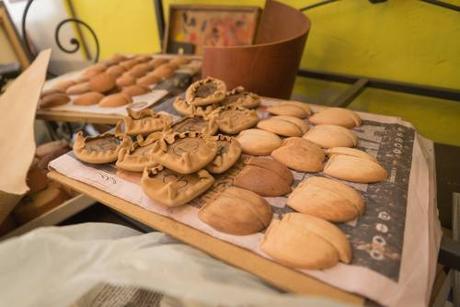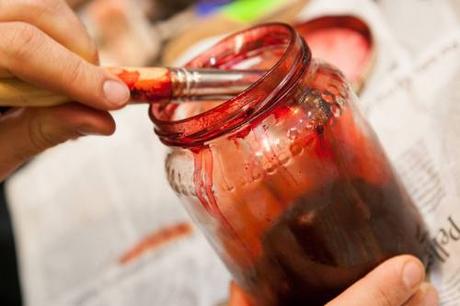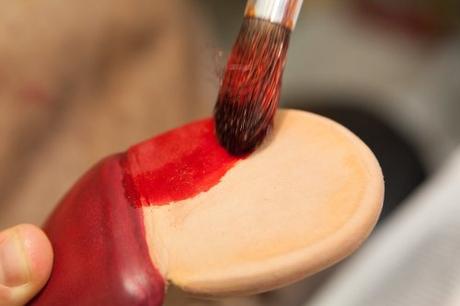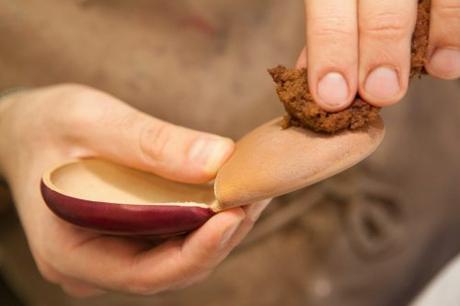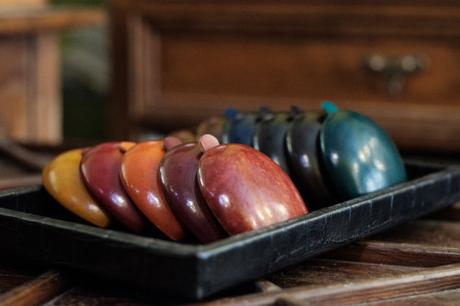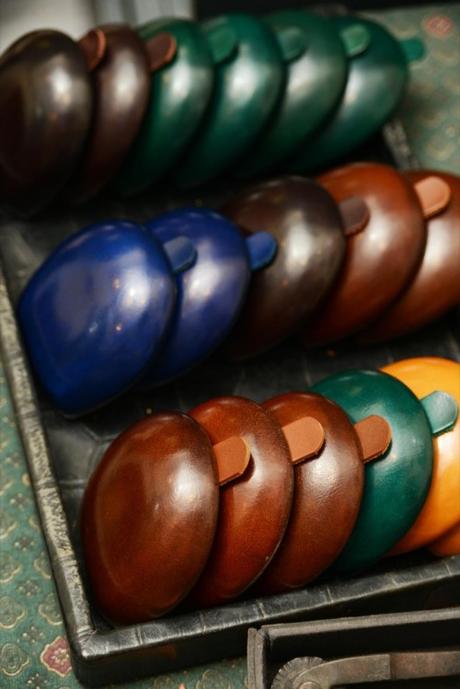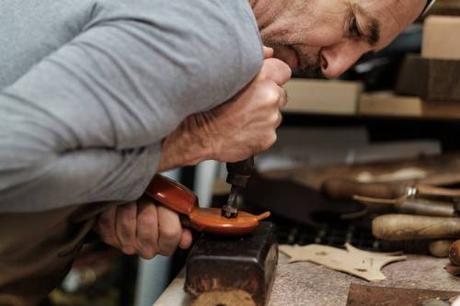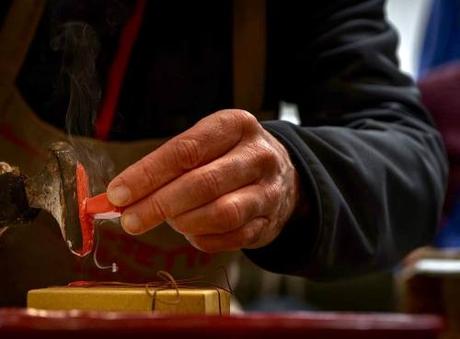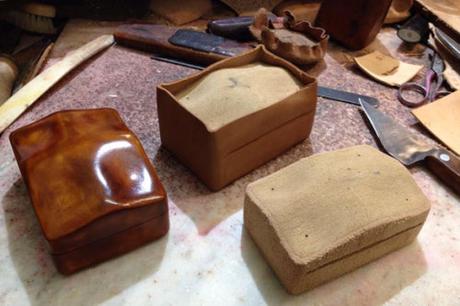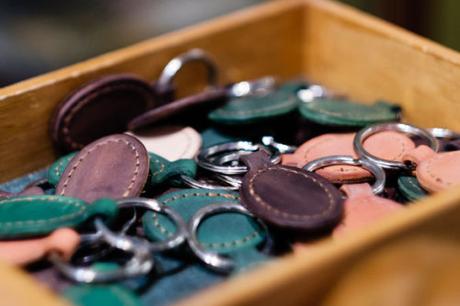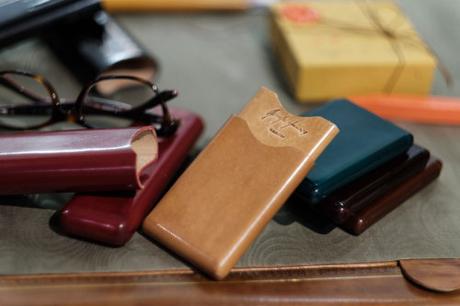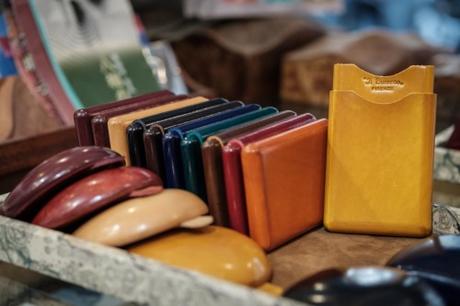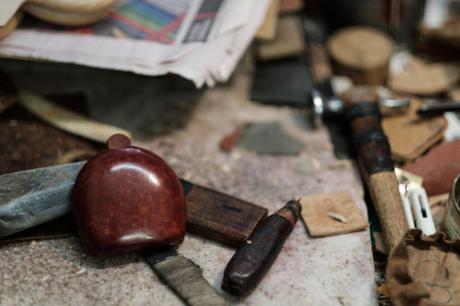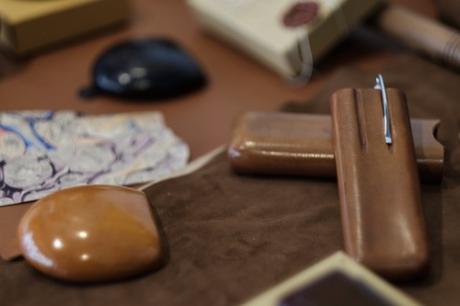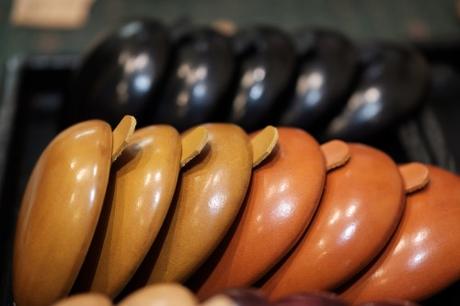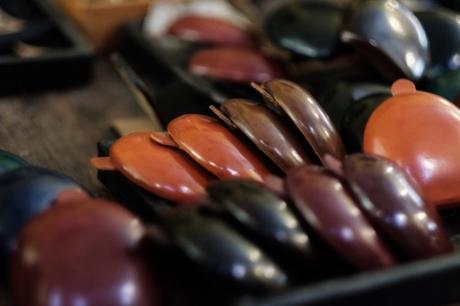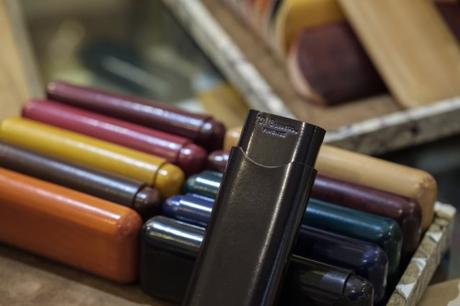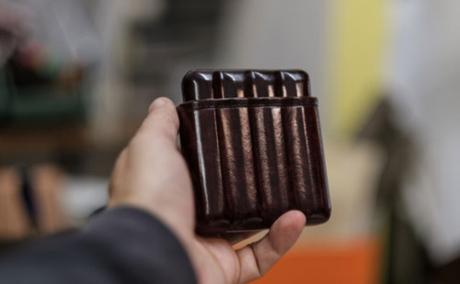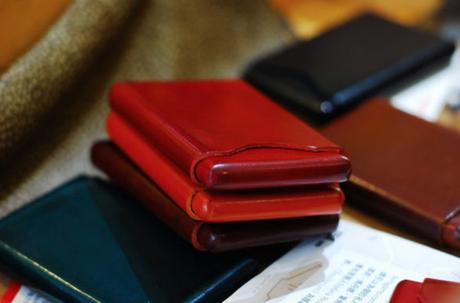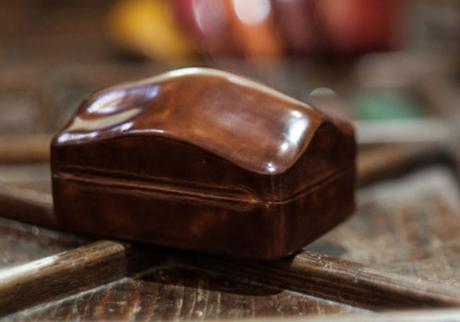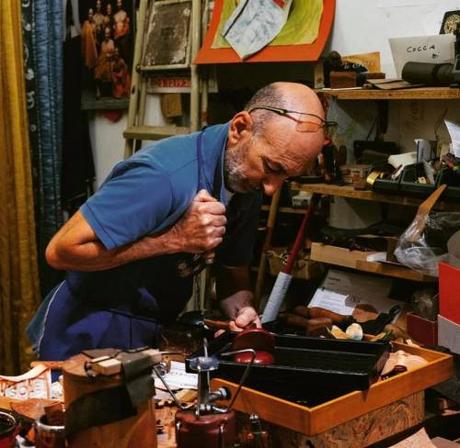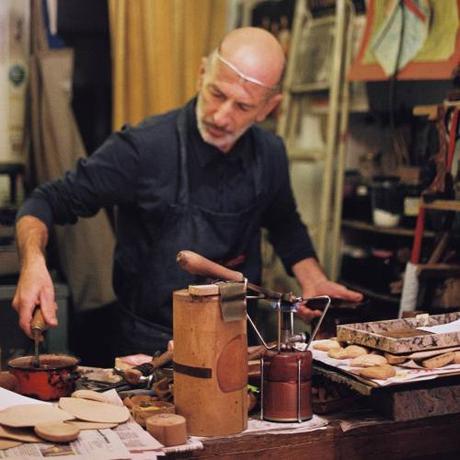
In the corner of Giuseppe Fanara’s workshop, small pieces of leather have been stretched across their wooden moulds. They’re still in their natural color – slightly bleached and evenly tan, with just a hint of grain sitting on the surface. Their coloring and neat, row-by-row arrangement make them look like butter biscuits that have been taken out of Danish tin. But in reality, Fanara is waiting for these soaked leathers to dry so he can turn them into vibrantly colored coin pouches.
Fanara is just one of the many leather artisans in Florence, Italy, a city known for its high-end leather goods and bespoke shoes (Stefano Bemer, Il Micio, Roberto Ugolini, Mannina, and Saic, notably, are all based here). In 1979, Fanara left school at the age of 16 in order to apprentice under a local craftsman. Ten years later, having mastered his trade, he branched out on his own and started a workshop he named Il Bussetto. For the last thirty years, he’s been hand-making what he calls “small treasures” – pocket-sized leather accessories such as coin pouches, card cases, and pen holders. Many of these wind up in Japan, where consumers appreciate the unique blend of traditional craftsmanship and playful design.
In the world of leather goods, there are two main camps. The first are those machine-made products that you’ll find of varying quality everywhere from swap meets to Saks Fifth Avenues. Designer brands such as Saint Laurent and Tom Ford depend on these accessories in order to turn a profit. Most people, after all, can’t afford $5,000 suits and $3,5000 leather jackets. To make up for the loss in real estate and marketing costs, luxury brands have to move high-margin accessories in large numbers – sunglasses, perfumes, and machine-made leather goods being the most popular.
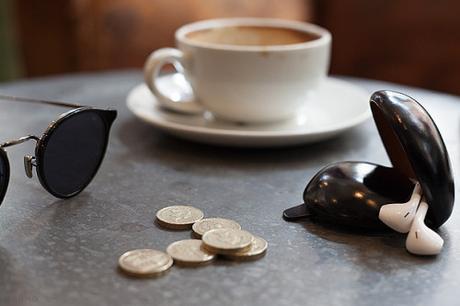
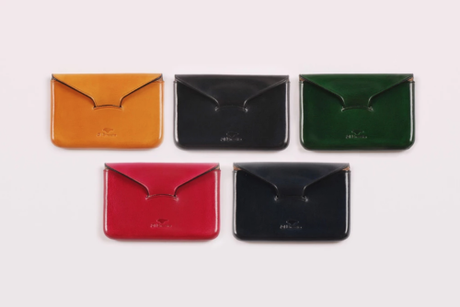
On the other end, you have craft-based businesses carrying on Old World traditions. Chief among them are those companies using French saddlery techniques, which used to be reserved for making the kind of horse reins, bags, and saddles necessary for dressage. Today, that sort of trade still exists, but it’s dying a slow, lingering death. You’re more likely to encounter saddle stitching – a technique that’s a hallmark of this craft – in things such as bags, wallets, and valet trays. Hermes is the most famous among these makers, although smaller firms such as Chester Mox, Ortus, Bertrand Montillet, Niwa, and Equus Leather are in their orbit.
Il Bussetto’s products don’t involve machine- or hand-sewing, although they’re no less handmade than what you’d find elsewhere. They claim their technique was invented by friars in Santa Croce sometime around the 13th century. I admit, truth is so often mixed with legend in this industry, I’m not sure if that’s not just marketing speak (I didn’t interview any friars for this post). But their method has a beautiful simplicity.
Fanara starts by cutting and skiving vegetable-tanned leathers, which he sources from nearby Tuscany. The leathers are then dunked into water and stretched across wooden moulds, not unlike how a shoemaker might produce an upper over a last. When these leathers dry, the pieces are glued together using a rice-based starch. Next, Fanara and his son Mirko hand paint every item using a natural dye they dilute with either water or alcohol, depending on the application.
Notably, like many other small European businesses, Il Bussetto uses crust leather. Crust means the leather comes in its natural, slightly pinkish tan color. This gives smaller workshops such as Il Bussetto some flexibility. Instead of having to order leathers in certain colors – two rolls in black, five in burgundy, three in green – they can paint their leathers in whatever colors they need to meet a customers’ orders. Doing so also gives their products a hand-finished quality. Their richly colored cases have a kind of visual depth that would hard to achieve if you colored the leathers in a pit or drum.
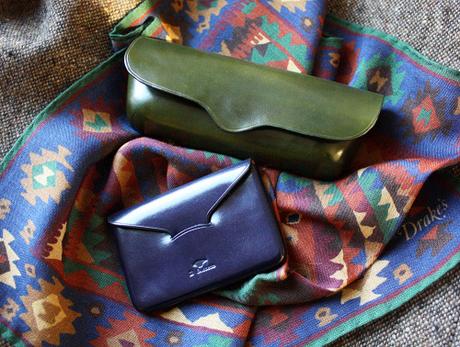
The final step of the production process is done with what the Italians call a bussetto (from which the workshop gets its name). A bussetto is a small metal instrument that vaguely looks like a hammer. It has a flat metal head on one end and wooden handle on the other. By running a bussetto over his accessories, Fanara flattens out the leather grain and gives the surface a natural, glossy finish. A small touch of shoe polish wax is then applied to seal everything up.
Since the production process is simpler and faster that what’s involved in saddle stitching, Il Bussetto’s products are nicely affordable while still offering a bit of Old World charm. Most wallets are less than $100 and the quality is quite good. “They’re in the middle of the price range and affordable to everyone, but the quality of the workmanship is evident,” Fanara says. “In my opinion, the fact that these are handmade, well-made, and well-finished is more important than the designs. But the designs also add value. My products are all round and smooth; there are no sharp corners. They are soft and seamless.”
I bought two of their accessories last year: a green eyewear case and a navy card case, which you can see above. The eyewear case is a little softer than I wanted. It’s perfectly fine in a desk drawer, but perhaps not rigid enough that I’d feel comfortable throwing it into the bottom of a bag. The card case, however, feels nice and solid in the hand. The edges are firmly structured and the case comfortably holds about seven credit cards. My only complaint is that, compared to my Chester Mox wallet, it’s harder to fetch things out. You have to pull out the whole stack to get what you need, whereas the open design on Chester Mox allows you to easily slide out just one or two items.
Still, I like the seamless designs, rounded corners, and cheerful colors. The cases are natural accompaniments to casualwear, but also add a touch of fun to tailored outfits. You can find Il Bussetto these days at Mr. Porter, End, Pegg & Sons, Need Supply, The Graduate Store, and Bloomingdale’s. Stag Provisions is having a sale right now, where you can pick up a card case for just $35. Yoox also has some old season stock. For other seamless wallets, check out Takuya Made by Hand.
